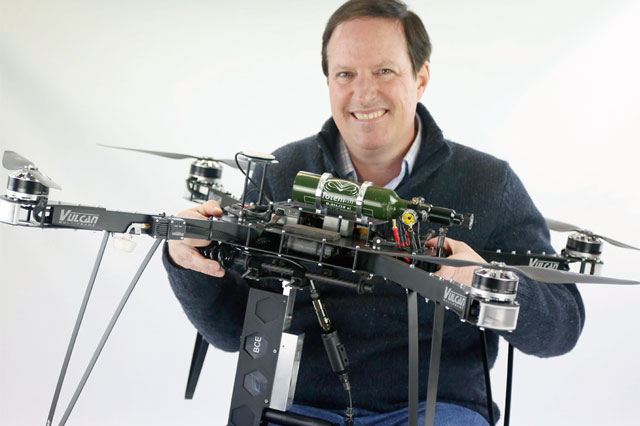 Thousands of square kilometres of the world’s forests are burned and cut down every day to make room for agricultural zones and new urban developments. But a new drone design may be able to combat industrial deforestation by dispersing seeds from the air and planting up to a billion trees yearly.
Thousands of square kilometres of the world’s forests are burned and cut down every day to make room for agricultural zones and new urban developments. But a new drone design may be able to combat industrial deforestation by dispersing seeds from the air and planting up to a billion trees yearly.
The drone – which is among the 39 semi-finalists in this week’s UAE Drones for Good Award – was designed by a crack team of scientists and researchers assembled by Oxford-based BioCarbon Engineering.
The system works in two separate phases. In the first, a drone is used to gather mapping data for use in 3D maps of areas chosen for reforestation. In the second phase, “planting” drones use a pressurised air system to propel biodegradable seedpods to the ground, each containing both germinated seeds and necessary nutrients.
Traditional reforestation techniques are slow and labour intensive. One NGO in Kenya, for example, manages to plant 200 trees a day using a 15-person team, working five hours daily. In contrast, planting drones, each operated by two people, would be able to plant an estimated 36,000 trees a day, at 10 per cent of the current cost. If 50 planting drones were operational, BioCarbon Engineering believes they would have the capacity to plant a billion trees a year.
Former NASA engineer Lauren Fletcher, the founder and CEO of BioCarbon Engineering, told Khaleej Times that the team is already working with a reforestation NGO in the vast Brazilian Amazon.
“They are really looking for us to help them access and restore areas that are farther from access roads and are very hard to get to by traditional hand planting methods,” he said. Fletcher said that planting drones could be of use to mining companies in order to restore areas after they end their operations. “We really want to restore entire ecosystems and think that reducing the cost of projects could really drive investment into rebuilding our global forests and jungle ecosystems,” he added.
Fletcher also expressed his appreciation towards the government of the UAE for encouraging the positive use of drone technologies through the UAE Drones for Good Awards.
“His Highness Shaikh Mohammed bin Rashid al Maktoum, Vice-President and Prime Minister of the UAE and Ruler of Dubai, has seen both the potential of unmanned aerial vehicles (UAVs) to provide huge positive impact on global scales and that a large prize like this is exactly the mechanism that will inspire and motivate bright people to develop truly creative and innovative ideas,” he said.
“I think investment in the national competition is really important and there are some amazing ideas coming from very talented UAE teams.” The national and international winners of the UAE Drones for Good Awards will be announced on Thursday and Friday at a ceremony in the Internet City, with live demonstrations before a panel of international judges.
“Win or lose, we are very excited for the opportunities that will come out of the credibility we have gained by making it to the semi-finals,” Fletcher added.
“We are very grateful to the government of the UAE, the entire Drones for Good team and Shaikh Mohammed.”
Photo: Lauren Fletcher poses with his planting drone
Source: Khaleej Times

UAS will definitely make a difference in this field, yet it seems unfair to compare the labor efforts of what we can assume are seedlings to aerial dispersal of seeds.
USFS already explored air-dropped bio degradable seed pods for reforestation. Albeit they were dropped from a C-130. Still, impact physics were the same. In order to get enough velocity to bury the seeds, they G loads damaged them. When they lowered the G load (lower impact velocity) the seeds did not bury enough to take. The problems went on. Recommend you do your own research.